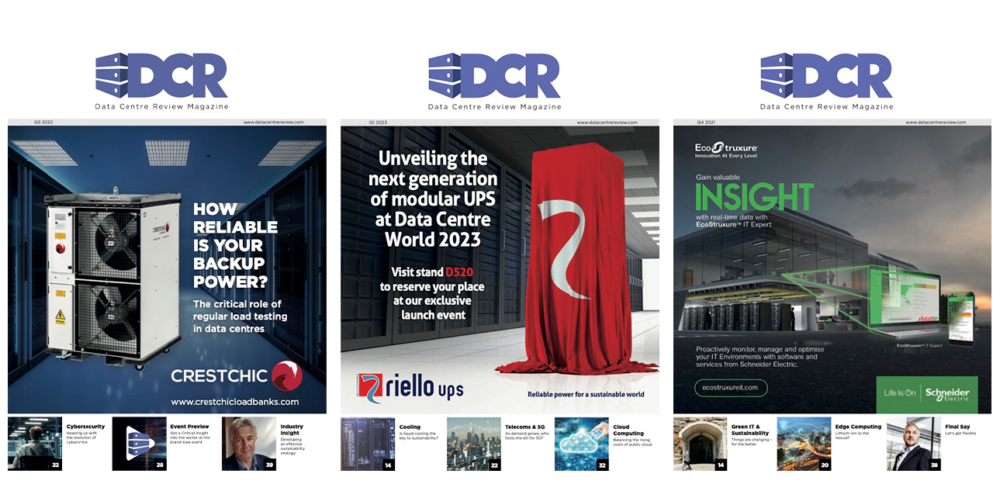Peter Schwartz, Senior Technology Consultant at OryxAlign, reveals why merging data centre infrastructure management (DCIM) with building management systems (BMS) could transform operational efficiency, cut costs and elevate sustainability.
DCIM is implemented to manage the physical and IT infrastructure of data centres, like servers, cooling systems, power distribution and network equipment. Alternatively, BMS manages the building’s environmental controls, including HVAC, lighting and security systems. It’s the independent operation of the two systems that has increased inefficiencies and missed optimisation opportunities across the industry.
Integration of DCIM and BMS proposes a unified view of IT and building operations. It’s this interconnected approach that creates a system of greater coordination between cooling systems, energy management and environmental controls. The result demonstrates improved efficiency, reduced energy consumption and better protection of critical assets.
For example, temperature data from the BMS can be leveraged to adjust cooling systems dynamically based on the workloads of servers monitored by the DCIM platform. This prevents unnecessary energy consumption, reducing overall power usage and lowering operating costs. It also supports equipment longevity by reducing thermal stress and encouraging consistent optimal performance.
Improving efficiency and reliability
By integrating DCIM and BMS, data centre operators can expect various advantages. One such benefit, real-time visibility into IT and building systems, permits fast, data driven decisions that are made to enhance performance. For instance, a cooling unit approaching a critical threshold could be mitigated with automated responses informed by both systems, preventing overheating while minimising energy consumption.
Integration of these systems goes beyond operational visibility. Predictive maintenance is also enabled with DCIM and BMS integration as operators can analyse data from across the facility. They can then identify potential system faults and prevent them from taking place, reducing downtime and enhancing the longevity of critical infrastructure.
Maintaining energy efficiency can also be achieved through integrating these systems. Precision in controlling cooling, lighting and power usage allows lower power usage effectiveness rates. These improvements contribute to cost savings and environmental goals motivated by the current push for more sustainable processes.
Integrations also enable optimised resilience. Unified data from DCIM and BMS systems mean operators identify and address issues faster and reduce disruptions. For instance, the detection of a power fluctuation can be detected and adjusted instantaneously to prevent repetitive failures across infrastructure.
Addressing the hurdles in implementation
DCIM-BMS integration has clear benefits, but with any new implementations challenges can arise. It’s common for data centres to experience issues with legacy systems which lack compatibility with up-to-date technology. The upfront costs that come with switching systems can be a setback especially for smaller operators.
Data security presents an additional challenge. With increased interconnectivity, data centres must implement robust cybersecurity measures to protect against cyber threats and unauthorised access. Deploying encryption, access control protocols, and continuous monitoring can mitigate these risks.
Operators must employ a strategic approach when facing these challenges. Pilot projects allow for organisations to experience benefits early, especially when they’re focused on highly sensitive areas of the facility like cooling systems and power management. Modular solutions can also be a smart investment that provides a realistic pathway to full integration, allowing data centres to install such systems as resources permit.
The future of data centres
As data centres become more complex, the integration of DCIM and BMS keeps operators one step ahead. The collaboration of IT and built systems addresses not only areas of operational concern but also provides facilities with the opportunity to embrace innovation when meeting increased demands.
Emerging technologies like artificial intelligence, machine learning and IoT-driven automation have the potential to enhance such systems. AI-powered analytics can provide 24/7 monitoring, predicting system failures with greater accuracy enabling effective mitigation and minimal downtime. While automated controls can dynamically adjust cooling and power distribution to match workload demands in real time.
Additionally, the rise of edge computing means data centres require more precise control over their infrastructure. With distributed computing environments, seamless integration between DCIM and BMS will be essential to maintaining efficiency and uptime across multiple locations.
By embracing DCIM-BMS now, organisations are well equipped to align optimised operations and cost reductions with the increasing market demands. Thinking strategically allows data centres to interlink these systems and ensure long-term success while elevating the industry’s standards for efficiency and reliability.


